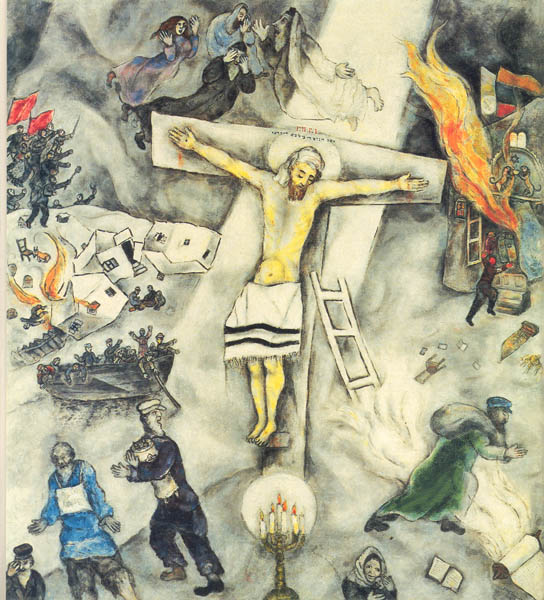Image Details

The Art Institute of Chicago
White Crucifixion by Marc Chagall painted in 1938. With great sensitivity and passion, Chagall portrays suffering Jews and identifies Jesus as one of them. The calm figure on the cross is draped in a tallit, or prayer shawl, the traditional garment worn around the shoulders by Jewish men during prayer. On the top of the cross appears the Latin abbreviation for “Jesus of Nazareth, the King of the Jews,” the words Pilate had written and nailed to Jesus’ cross; below these letters are the Hebrew words for the same phrase.
Tragic and violent scenes occurring in Europe at the time Chagall painted surround the crucified Jesus. Soldiers rush in upper left to attack a village; a synagogue is burned as a Nazi plunders its sacred Torah scrolls. A Torah scroll burns, bottom right, but another is rescued in the arms of a villager, bottom left. As homeless Jews flee in all directions, a menorah, or Jewish ritual candelabra, lights the base of the crucifix.
